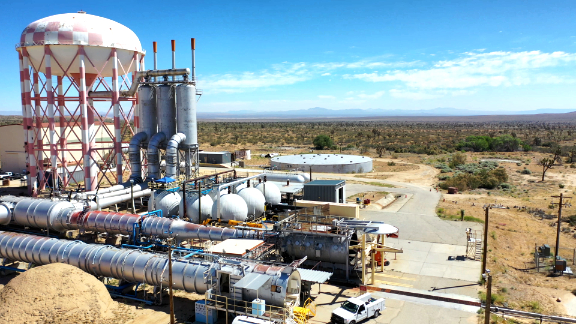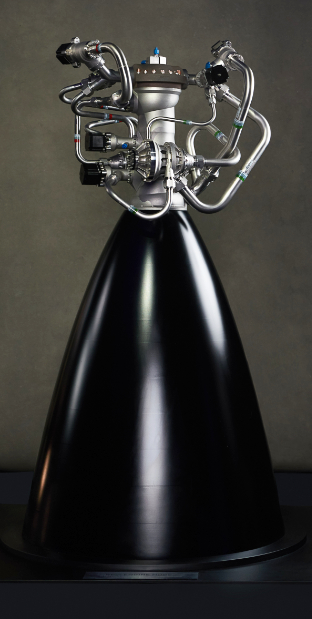The U.S. Air Force Research Laboratory and Blue Origin are developing a new test facility for the Blue Origin BE-7 lunar lander engine at the AFRL rocket lab.
Capital improvements, funded by Blue Origin, will allow BE-7 testing in a simulated, space-like environment. Planned work includes adding liquid hydrogen and liquid oxygen propellant capabilities as well as additional facility upgrades.

The Altitude facility at Edwards Air Force Base, California, does tactical scale research on next generation rocket motor and engine components, propellant formulations, and subsystems; and high vacuum research on satellite components, subsystems, and systems. Research testing includes solid rocket motor testing at simulated altitudes up to 120,000 feet. The complex has been used for space simulation to validate thrust vector control systems, baseline a standard for solid rocket motor propellants, research extendable nozzle cones, and systems, and research space qualified ignition systems. Photo is courtesy of AFRL.
AFRL and Blue Origin signed a 15-year Cooperative Research and Development Agreement on December 11, 2019, to develop a test facility for the Blue Origin BE-7 Lunar Lander Engine. The CRADA was signed by Dr. Shawn Phillips, Chief of the Rocket Propulsion Division, and Bob Smith, CEO of Blue Origin.
The BE-7 engine is a new, high performance, 10,000 pound-thrust, dual-expander, cycle engine for in-space applications, including Blue Origin’s Blue Moon lunar lander. The new AFRL test capabilities will support various development, qualification, and production acceptance tests of the BE-7 engine under future Commercial Test Agreements, also to be funded by Blue Origin.
The CRADA focuses on a public-private partnership to create a superior upper stage engine and in-space propulsion testing capability that directly supports near-term national space objectives, and provides enduring infrastructure to support current and future national security and commercial space requirements.

The Blue Origin BE-7 lunar lander engine. Photo is courtesy of the company.
The AFRL rocket lab at Edwards Air Force Base, California, has played a key role in advancing rocket engine technologies for the nation, since 1952. AFRL has been a prominent player in nearly every liquid rocket engine developed and flown by the United States.
Blue Origin was founded by Jeff Bezos, the founder and CEO of Amazon, in 2000 with the mission to “enable an enduring human presence in space.” The company has focused on developing operationally reusable launch systems and technologies to dramatically lower the cost to access space with greatly increased safety and reliability. Blue Origin has a development facility in Kent, Washington, as well as facilities in Texas, Florida, and Alabama, where they test rocket engines and conduct launch operations.
Eric Blumer, Senior Director for the BE-7 engine program, stated that the firm is thrilled to partner with the AFRL Aerospace Systems Directorate and their Rocket Propulsion Division at Edwards Air Force Base. Repurposing the infrastructure at the 1-42 test site enables the company to accelerate development of the BE-7 engine for the Blue Moon lunar lander, which will play a critical role in Blue Origin’s support of the Artemis program to send women and men to the moon by 2024. Dr. Phillips and his team were very responsive as the company defined this unique CRADA.
Dr. Dan Brown, Chief Engineer of the AFRL Rocket Lab, added that the AFRL team is excited to collaborate with Blue Origin and support the U.S. presence in space. Many of AFRL's engineers view this effort as a natural extension of the organization’s early development of the F-1 engine in the 1950s that ultimately took humans to the moon on the Saturn V. Facility improvements under this public private partnership will open the door for rocket engine testing beyond the BE-7 test campaigns. The new test capability enables the U.S. Air Force and future commercial partners to test advanced upper stage engines at relevant altitude conditions.

